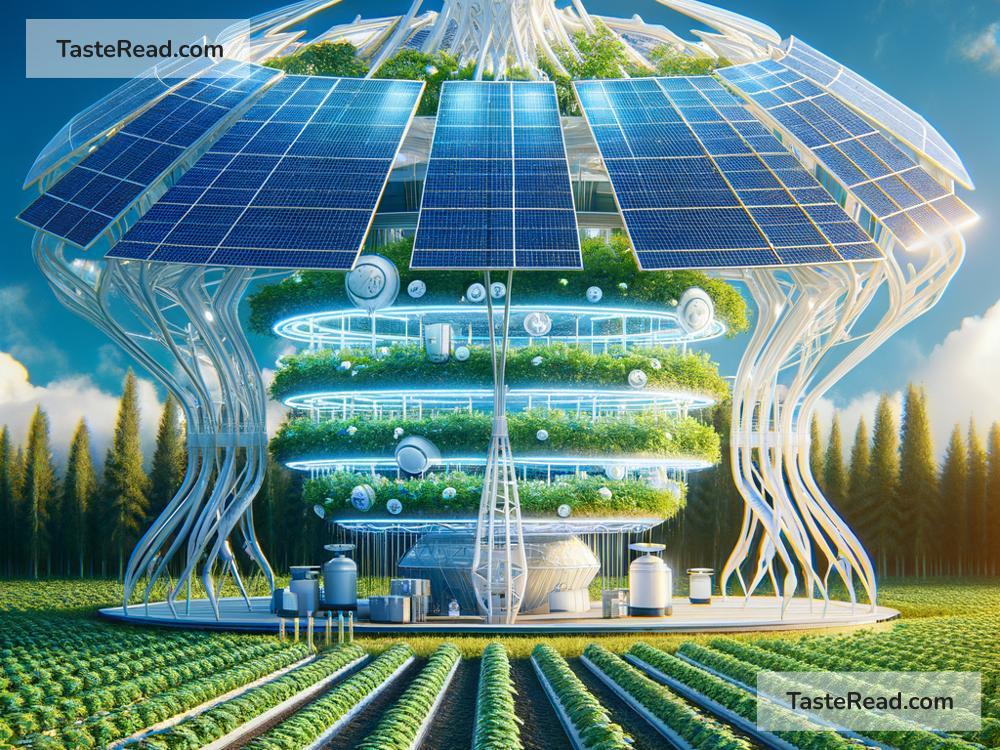The Future of Solar-Powered Agriculture: A Bright and Sustainable Path
In recent years, the world has been facing big challenges like climate change, food security, and rising energy costs. Agriculture, the backbone of human civilization, is being directly impacted by these problems. However, there’s a promising solution on the horizon: solar-powered agriculture. This innovative approach uses the power of the sun to make farming more sustainable, affordable, and environmentally friendly. Let’s take a closer look at what this future might look like and why it matters.
What Is Solar-Powered Agriculture?
Solar-powered agriculture simply means using solar energy—energy that comes from the sun—to run farming activities. Solar panels convert sunlight into electricity, which can be used to power irrigation systems, farm equipment, storage facilities, and even homes in rural areas. This clean energy source is rapidly replacing traditional fossil fuels, making farms greener and more resilient to modern challenges.
There are various ways solar energy is applied in farming, such as:
- Solar water pumps: These pumps use solar energy to move water from wells, rivers, or reservoirs to irrigate crops.
- Solar-powered greenhouses: Farmers can maintain optimal growing conditions in greenhouses heated or cooled by solar power.
- Solar dryers: These dryers help preserve food by drying grains, fruits, or vegetables with solar energy.
- Agrivoltaics: This new concept combines solar panels with crops in the same space, letting farmers grow food underneath or between the panels while generating power.
Why Solar-Powered Agriculture Matters
The move toward solar-powered agriculture is not just a trend; it’s a crucial step for the planet. Here are some reasons why this approach is gaining attention:
-
Reducing Carbon Footprint: Traditional farming uses a lot of fossil fuels for irrigation, machinery, and logistics, which contributes to greenhouse gas emissions. By switching to solar power, farmers can significantly reduce their carbon footprint and contribute to fighting climate change.
-
Solving Energy Costs: Energy prices are rising worldwide, and many farmers are struggling to pay for fuel and electricity. Solar energy is free after the initial installation of panels, making it an affordable option that can save farmers money in the long run.
-
Helping Remote Communities: In many rural areas, access to electricity is limited or expensive. Solar-powered agriculture provides an independent source of energy that can help farmers grow food and improve living conditions in these off-grid areas.
-
Improving Food Security: Solar power can increase productivity by providing consistent energy for irrigation, storage, and processing. This allows farmers to grow more food and reduce waste, especially in areas that struggle with unreliable electricity or scarce water resources.
Innovations in Solar-Powered Agriculture
The future of solar-powered farming is bright—pun intended! Researchers and engineers are constantly developing new technologies to make solar energy more efficient and accessible. Here are some exciting innovations shaping the future:
Agrivoltaics: Farming Under Solar Panels
Agrivoltaics is a revolutionary approach where crops are grown under or alongside solar panels. Surprisingly, some crops actually thrive under partial shade created by the panels. This system makes better use of land, allowing farmers to produce energy while still growing food.
For example, farmers in Japan and India have successfully used agrivoltaics to grow tomatoes, spinach, and other crops while harnessing the sun’s energy. It’s a win-win for food production and renewable energy.
Battery Storage Systems
One challenge with solar energy is its reliance on sunlight, which is not always available at night or during storms. To solve this, advancements in battery storage allow farmers to save energy for later use, ensuring continuous power for irrigation or refrigeration.
Solar-Powered IoT Devices
As farming becomes more tech-driven, solar energy is powering Internet of Things (IoT) devices that monitor crop growth, soil moisture, and weather conditions in real time. These devices help farmers make smarter decisions, conserve resources, and maximize yields.
Challenges and Opportunities
Solar-powered agriculture is not without hurdles. The upfront cost of installing solar panels can be expensive, which may be difficult for small farmers with limited budgets. However, governments and organizations are stepping in to offer subsidies, loans, and incentives to help farmers adopt solar technology.
Additionally, while solar power works well in sunny areas, regions with frequent cloud cover or low sunlight may face challenges. But researchers are developing new types of solar panels that can absorb even weak or diffused sunlight, making the technology more versatile.
Despite these challenges, the benefits of solar-powered agriculture far outweigh the drawbacks. It offers countless opportunities to create jobs, reduce energy dependence, and improve sustainability on a global scale.
A Greener Future Awaits
The future of solar-powered agriculture is full of promise. With advancements in technology, supportive policies, and growing awareness about environmental issues, more farms around the world are expected to embrace solar energy. This shift will not only help farmers save money but also protect the planet for future generations.
Imagine a world where vast farming regions are dotted with solar panels, powering healthy crops, clean water systems, and eco-friendly communities. Solar-powered agriculture has the potential to transform this vision into reality—and the time to invest in it is now.
Whether you’re a farmer, a policymaker, or someone who enjoys fresh food, the idea of solar-powered farming is one we can all root for! Let’s work together to ensure a greener, sunnier future for agriculture—and for the entire planet.

